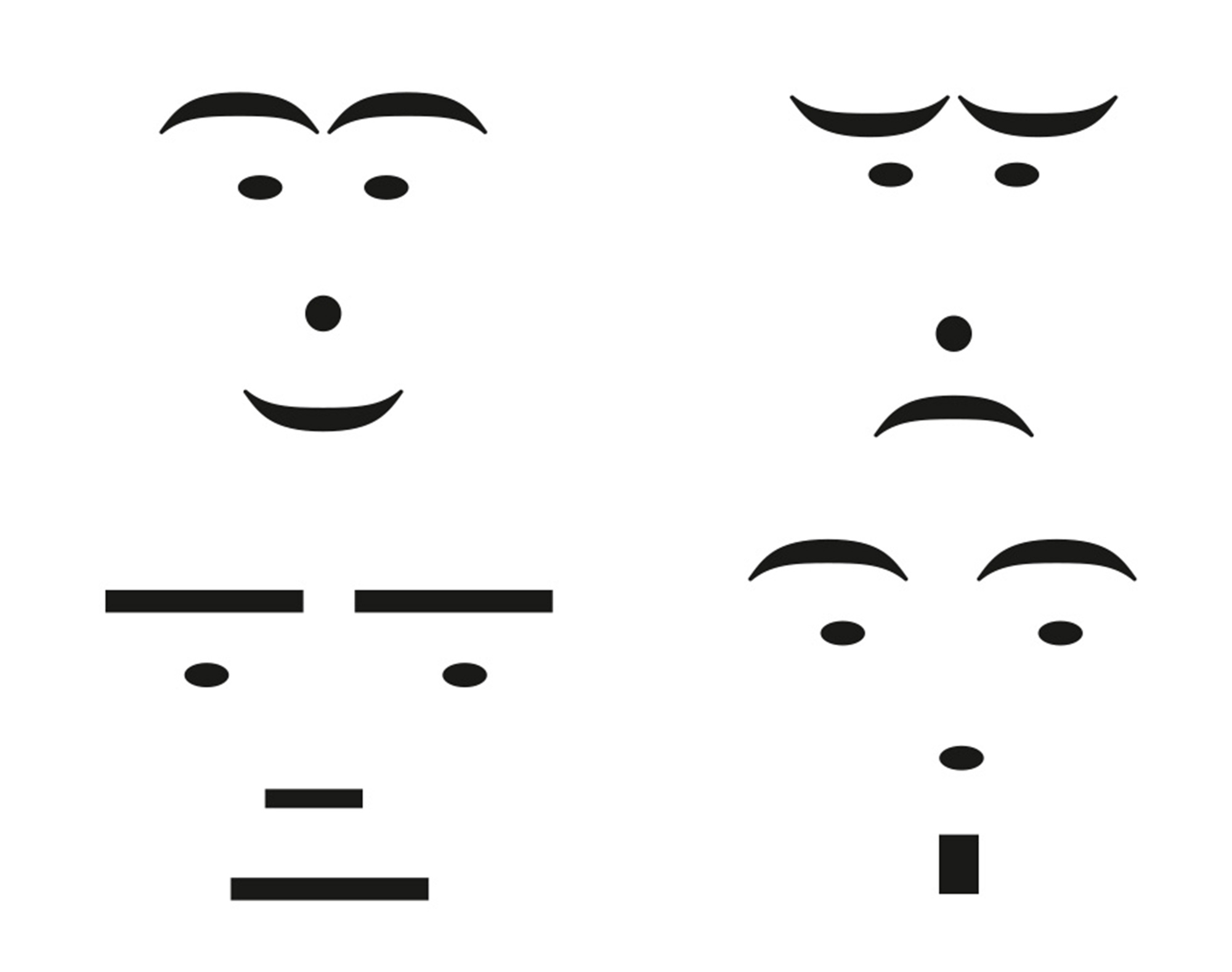Saving Face
Into the canny valley with the emoticon
Jon Calame
Sometimes a quantitative upgrade in mass communication comes with a qualitative regression, as when illuminated manuscripts—ornate, layered, polyvalent—gave way to the monochrome, typeset page. The initial loss of detail and narrative depth was stupendous but, of course, printers caught up and soon could render nearly every mark the hand could produce.
Usually temporary, often unimportant, this transitional crudeness can be seen as an emblem of forward movement. The new vehicle does not stay ugly forever; it evolves, compensates, and mimics.
Instant messaging provides an unusually good example of these transitional losses. From the beginning, it has been clipped and cryptic, maladroit and monosyllabic: smoke signals, semaphores, lighthouses, flares. This is the price of instantaneity over great distances. Such attenuation of expression is even more exaggerated in the case of electrical instant messaging, whose affective content was limited by the extreme compression of the copper wire. The first telegram in 1844 delivered these words from Washington, DC to Baltimore:
Three affect markers. The question mark may be the first to have entered our alphabet, flying in as a diagonal lightning bolt, right to left, around the eighth century. By the thirteenth century, the familiar curved shape signaled a final rising intonation of the interrogative, more like musical notation than punctuation. The exclamation point, a latecomer, appeared on typewriter keyboards only after World War II. Was it perceived at the time as a cheap substitute for strong, expressive writing? Not clear!

As early as 1881, Puck magazine was ridiculing the possibility of rendering human facial expressions using type by publishing four faces—representing “joy,” “melancholy,” “indifference,” and “astonishment”—composed of keyboard characters. Such an ambition might have remained nothing but a joke were it not for the surge in instant messaging that came with mainstream email in the early 1990s. The keystroke face had in fact been introduced in 1982 by Carnegie Mellon computer scientist Scott Fahlman to clarify any online bulletin board posts that might be misunderstood. It implies an emotional backchannel in support of the typed conversation, providing information about the writer’s mood, intentions, and seriousness. It is a hedge against loose-jointed prose, ribbings that do not translate well to cyberspace, and unintended offense. It is the cheapest social mishap insurance on earth.